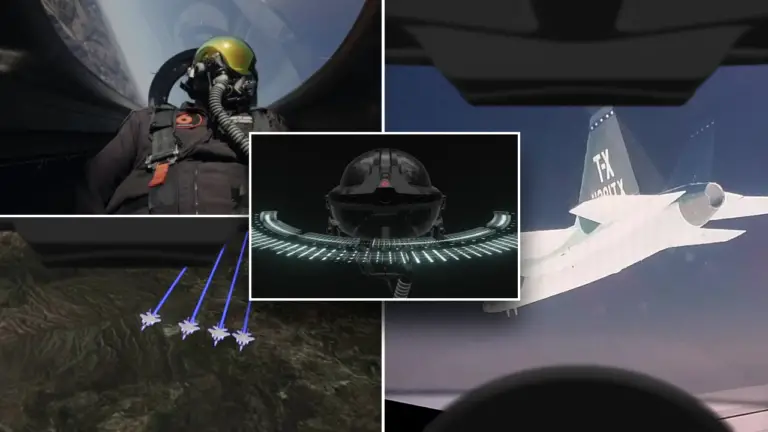Revolutionary Helmets Give U.S. Military an Edge in Dogfight Training
Pilots can now engage in thrilling dogfight simulations while flying, thanks to cutting-edge visors. A former Air Force aviator has called this development a “transformational” advantage for the U.S. military.
“When you combine the power of AI with the power of augmented reality, now you are capable of creating synthetic worlds that are living, breathing, digital worlds that will think and fly and act for themselves,” says Dan Robinson, CEO of military tech company Red 6. “Now you can put a really representative training together at scale outdoors in dynamic environments, which is a transformational value proposition for the Air Force and how we think about training.”
What’s the Buzz About Artificial Intelligence (AI)?
When aviators put on Red 6 helmets and zoom through the skies at hundreds of miles per hour, they encounter digital bogies and friendlies enhanced with artificial intelligence. Robinson believes that equipping fighter pilots with augmented reality and AI-powered combat simulations will make their training more frequent, effective, and cost-efficient.
“The problem we set out to solve was there was a training crisis in the U.S. and allied militaries around the world because we can’t get enough training at scale against relevant threats,” Robinson explained. “Now we can do that synthetically.”
A Cost-Effective Solution
Training Air Force fighter pilots traditionally comes at a significant cost, ranging from nearly $6 million for an F-16 aviator to over $10 million for F-22 and F-35 aviators. Robinson is determined to change this.
“The whole reason I started this company is pilots must fly,” Robinson previously told Fox News. The former pilot said his company’s augmented reality-powered training is a “cost-effective” way to emulate aircraft combat.
High-Tech Training in Action
Red 6’s augmented reality system can display simulated aerial threats or allies, refueling missions, surface-to-air combat situations, and more. This technology has been successfully integrated into T-38 test flights at bases in California and New Mexico. The U.S. Air Force spends hefty sums, with over $33,000 an hour to operate an F-22 flight, $28,000 for an F-35, and $8,000 for an F-16, according to Department of Defense data.
“I want a world in which I taxi out with my colleagues and every time we go up to fly and train, we’re training to do what we would be doing for real,” Robinson said. “And the adversaries are provided at scale, at frequency, and at relevancy, synthetically outdoors up in the sky.”
Pioneering Technology
The advanced optical systems inside these new-generation helmets are remarkable, according to Robinson. The innovations they bring to the table are immense, promising a significant shift in pilot training.
These developments in the realm of military training offer exciting possibilities for the future of aviation combat.

